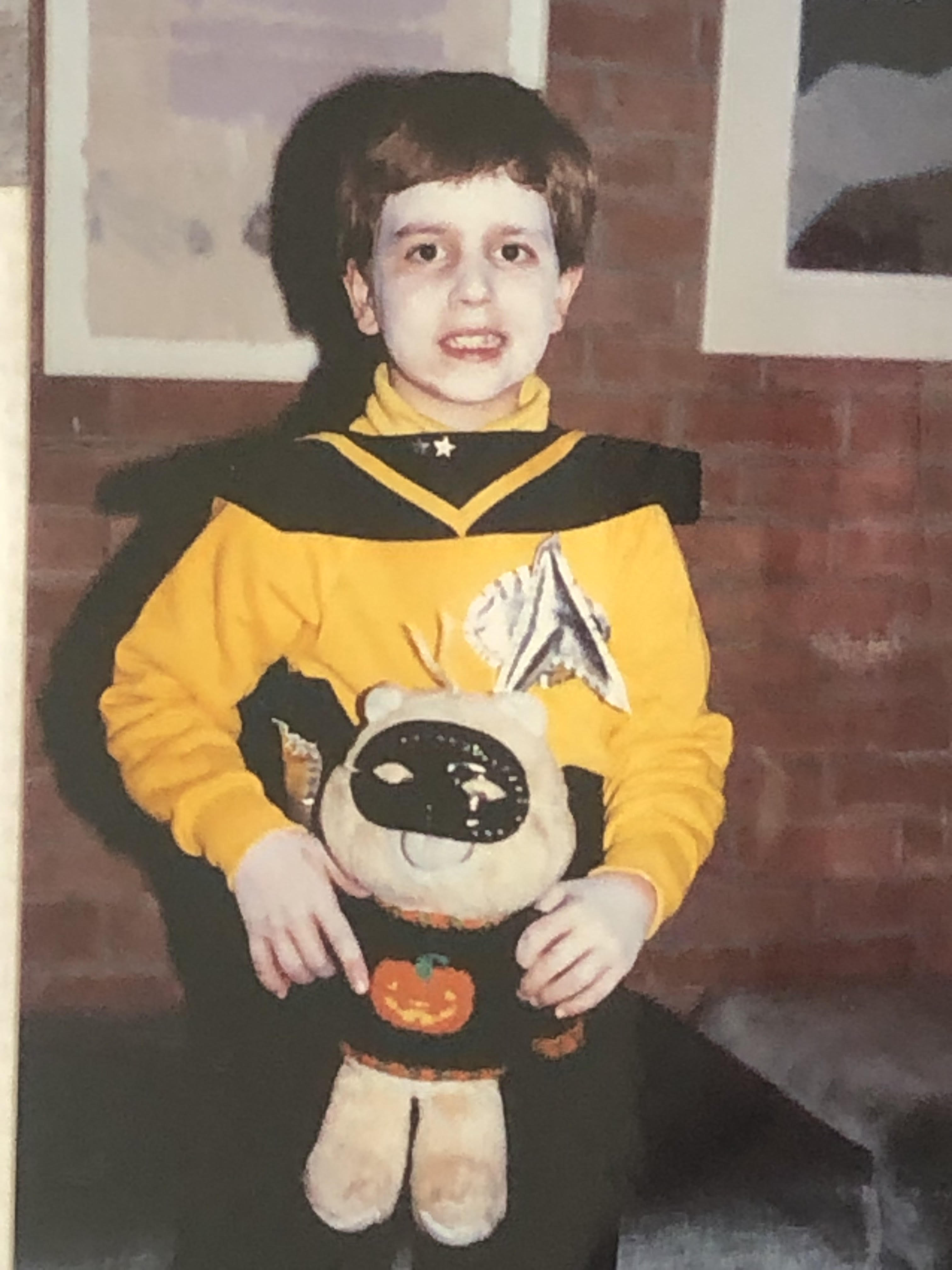The Arsenal of Freedom: Just for Kids
Originally published in Outside In Makes It So: New Perspectives on 174 STAR TREK TNG Stories by 174 Writers. Edited by Robert Smith?
When I watched “The Arsenal of Freedom” for the first time on my local independent station—Channel 50, WKVD Detroit—I had been six years old for less than a week.
At that age, I wasn’t impressed by the ironic anti-war message. I didn’t notice that, when you include commercial breaks, the story unfolds in real time like an episode of 24. And I certainly didn’t know that the episode, in which our heroes are plagued by an automated weapon system, was anticipating the thorny issues of drone warfare that we are grappling with in the 21st century.
But none of that mattered, because as far as I was concerned “The Arsenal of Freedom” was the greatest episode of Star Trek ever.
“Arsenal” has everything a kid could want. There are phaser fights. Space battles. Data uses his super abilities to leap tall buildings in a single bound. Riker tells jokes about the Good Ship Lollypop. Tasha finally gets to prove herself a competent tactician. Worf takes his first turn at tactical, where he clearly belonged all along. Gruff, stodgy Picard (he was gruff and stodgy back then) has to be a caregiver, while Beverly becomes a patient. Geordi is thrown into the deep end of command, while Deanna actually gives sage counsel, for once.
Plus—and I can’t emphasize this enough—the Enterprise separates. To a kid who recently spent his allowance on a clunky metal model of the Enterprise that splits in two, this is everything. I must’ve reenacted that battle a hundred times.
To an adult, “Arsenal” might be a run-of-the-mill episode with a cheesy forest set and a drone that can’t shoot straight, but to a kid in 1988, it was the perfect TNG episode.
And that is incredibly important.
Before TOS even went on the air, Gene Roddenberry was insisting to anyone who would listen that Star Trek—unlike, say, Lost in Space—was not “for kids.” But, as much as certain people want to deny it, time proved Roddenberry wrong. If you’re a Trekkie, chances are you got hooked as a kid like me. It isn’t just that kids love space adventures or that they have the imagination to overlook a bad rubber lizard suit. The fact is, the seeds of optimism and humanism sown by Star Trek fall on fertile ground with the young.
Kids are one of the most important and most overlooked constituencies of Star Trek fans, and Next Gen knew how to reach them. In 1988, like today, there weren’t many shows the whole family could watch. It was a time when parents and politicians were beginning to cotton to the notion that if the average child watched six hours of TV a day, at the very least it shouldn’t be filled with sex and violence. A show that kids actually wanted to watch and that adults could tolerate was the Holy Grail for families in the late ’80s. The first season of TNG fell short in many ways, but it did manage to clear that all-important bar.
Next Gen became a factory that churned out young Trekkies. Families tuned in—not hardcore fans, but moms and dads who were passingly familiar with the TOS reruns and films. As adults rolled their eyes at the cringe-inducing antics of Wesley Crusher, kids like me saw themselves in him. As adults grumbled that the simplistic peace and harmony of the Star Trek future could never be attained, kids who didn’t know better were learning to look at the world that way. There were more prosaic delights too. I thought “ugly bags of mostly water” was the funniest thing I’d ever heard. After the alien parasites tried to make Picard eat worms, I took particular delight in my Kraft Mac ’n’ Cheese. And don’t get me started about Data! How he fought that laser drill! How he put in those computer chips at super speed! And, yes, how he jumped eleven meters to save Picard and Beverly from the cave in “The Arsenal of Freedom.” I was Data for Halloween in 1988.
Later Star Trek abandoned this kid-friendly approach—to the the franchise’s detriment. Roddenberry’s heirs at the helm of Trek wanted to tell adult stories. Those stories may have had tons to offer for grown-ups, but they had much less for kids. Peace and harmony were replaced with CGI battles. Wesley was replaced with the decon chamber. Star Trek’s bright future became grayer. The final frontier was brought down to earth. For Next Gen kids like me, who were teenagers by this point, these changes set the hook of lifelong fandom. But, while old fans were being serviced, new fans weren’t brought in anymore. The kids were gone, casual family viewers left with them, and Star Trek limped to cancellation.
“The Arsenal of Freedom” is kid-friendly Trek at its best—simple, exciting, high-minded. This is where Next Gen’s strength lay: opening the doors of Star Trek to a new fans, and opening young minds. Maybe I was right in 1988. Maybe it is the best episode ever.

Adam Hunault as Data for Halloween, 1988 -- costume lovingly sewn by his mom